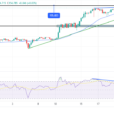The US Bureau of Labor Statistics just reported the June Non-Farm Payrolls figures, and while that data wasn’t perfect, it is certainly reassuring for bulls on the US economy.
On a headline basis, the US economy added 222k jobs in June, solidly above economists’ expectations of 175k new jobs. In addition, the BLS revised its estimate of jobs growth in the previous two months higher, for a net addition of 47k more jobs.
Despite the strong job growth, the unemployment rate actually ticked higher to 4.4%, but because it was caused by a rise in the Labor Force Participation Rate to 62.8%, it represents a “good” rise in unemployment. In other words, the stronger economy is drawing previously-discouraged US citizens back into the labor market.
As always, we like to look at the quality of the jobs created, not just the absolute quantity. On this front, the outlook is more mixed. For the “glass half full” camp, the average hours worked bumped up from 34.4 to 34.5, signaling a growth in full-time employment. However, and this is a big “but”, average hourly earnings remain stuck in the mud. Earnings rose only 0.2% month over month (and that’s rounded up from .15%, or $0.04/hr), below expectations of a 0.3% rise. On an annualized basis, wages rose 2.5% vs. 2.6% eyed.
As we noted last week, US economic data had been relatively mediocre heading into today’s NFP report, with clear signs of a slowdown in economic activity through May and into June. Despite the weak economic data, the Federal Reserve has seemingly remained dead set on normalizing monetary policy through both balance sheet reduction and another interest rate hike later this year (see “Is the Fed playing with fire by tightening into a slowing economy?” for more).
The big take away from this report is that there’s no sign of a tightening labor market yet. The economy continues to create new jobs without accompanying wages increases (a precursor to inflation), despite the historically low unemployment rate. Despite some signs of strength, today’s report does little to increase the pressure on the Federal Reserve to tighten policy.












Leave A Comment